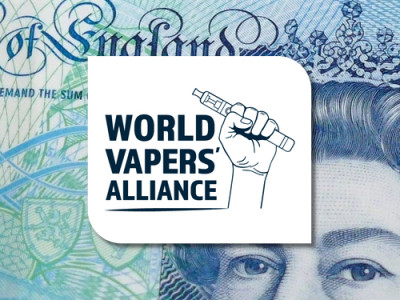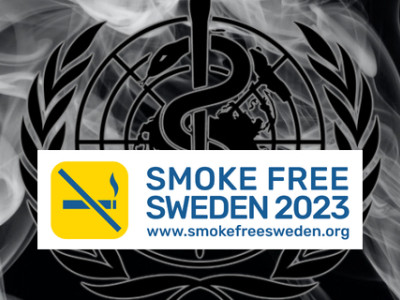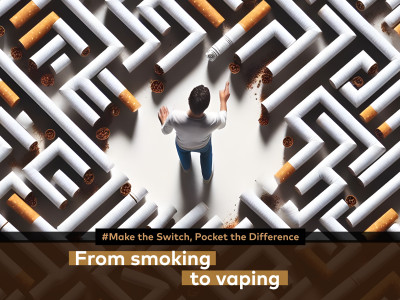Only space travellers and people languishing in coma in hospital can have missed that the attitudes towards vaping have taken a serious shift for the worse over recent months as politicians manoeuvre to embrace populist emotive arguments over scientific evidence. Two private members’ Bills are moving through Parliament, the radio constantly spits out opinions from would-be celebrity Head teachers, and academics who believe ‘good is the enemy of the perfect’ spout Bloomberg myths.
Long standing vapers and consumer advocates who once counted on the UK being a beacon nation for harm reduction now have to consider who are our bedfellows in the push for reason and evidence-based legislation – and the tobacco industry is positioning itself as such a champion.
Speaking at the Global Tobacco and Nicotine Forum (GTNF) in Seoul, South Korea, BAT’s Chief Strategy and Growth Officer, Kingsley Wheaton, has called for “smarter regulation and greater collaboration in order for countries to achieve their smokefree ambitions”.
He said: “As an industry, we stand at an important crossroads.
There is much confusion as to the way forward. Consumers are confused. Doctors are confused. Regulators are confused and are struggling to enforce the laws they have written.
What’s too often missed is the opportunity that Tobacco Harm Reduction presents. The opportunity for a more progressive environment where both Tobacco Harm Reduction and the role of nicotine is far better understood. The opportunity for consumers to freely switch out of cigarettes to alternative products. In essence, a switch to better.”
Kingsley Wheaton says industry, consumers and society need “a level playing field” that compromises “smarter regulation, better enforcement, a consistent and compelling science foundation”. It misses one essential element – honesty. We need honesty from the industry, politicians and all academics.
“As the world’s largest Vapour company, I think it’s our responsibility to suggest ways that governments might deliver on their aims for a Smokefree 2030,” continued Wheaton.
He then introduced BAT’s outline for a smarter regulation framework for single-use vapes:
- On-device technology and functionality. “Vapour products should be accessible only to adults. On-device technology could help in this regard. And for the environment, appropriate ways to ensure safe and proper disposal of batteries would be a significant step forward.”
- Flavours are an important driver of adoption for smokers seeking alternatives. “However, flavours in vapour products should not particularly appeal to anyone underage. Ensuring the removal of those products that do could be a balanced approach to meeting consumer demand while reducing underage appeal.”
- Manufacturing and import level. “Ensuring that non-compliant products cannot reach the market in the first place is another area regulators should explore. This would be a highly effective and efficient way to ensure that illicit and non-compliant products do not reach consumers.”
- Retail restrictions. “Reasonable safeguards at the point-of-sale would help ensure these products are sold only to adult consumers. Solutions such as retail licensing and facial recognition technologies should be seriously considered.”
- Enforcement and penalties. “Governments must wield their enforcement powers to build the credibility of Tobacco Harm Reduction and ensure consumers are purchasing legitimate products. Such measures should be rigorously enforced and those who fail to comply should face meaningful sanctions.”
While some parts of Wheaton’s suggestions will be met by nods of approvement, advocating a restriction on available flavours will be a red line to most consumers who see through the strawman argument and know that there is no such thing as a child-only flavour. All a move like this does is eliminate market competition for the large juice manufacturers.
The most recent ASH surveys into teen and adult use finds that fruit flavours are the most popular for both teens (60%) and adults (47%). The second and third most popular adult flavours (menthol and tobacco) are destination choices for switchers who then tend to progress on to other flavours such as fruit to help them remain smoke-free.
Dave Cross
Journalist at POTVDave is a freelance writer; with articles on music, motorbikes, football, pop-science, vaping and tobacco harm reduction in Sounds, Melody Maker, UBG, AWoL, Bike, When Saturday Comes, Vape News Magazine, and syndicated across the Johnston Press group. He was published in an anthology of “Greatest Football Writing”, but still believes this was a mistake. Dave contributes sketches to comedy shows and used to co-host a radio sketch show. He’s worked with numerous vape companies to develop content for their websites.
Join the discussion
Harm Reduction For The Rich
The United Kingdom risks becoming a harm reduction country only for the wealthy, according to Michael Landl of the World Vapers’ Alliance
CAPHRA Highlights Tobacco Control Flaws
The Coalition of Asia Pacific Tobacco Harm Reduction Advocates highlights the flaws in tobacco control which has led to the rise of black market in Australia
A Missed Opportunity at COP10
The Smoke Free Sweden movement says that COP10 was a missed opportunity to save millions of lives
COP10: Promote Tobacco Harm Reduction
Experts with Smoke Free Sweden are emphasising the urgent need for a Tobacco Harm Reduction approach at COP10












